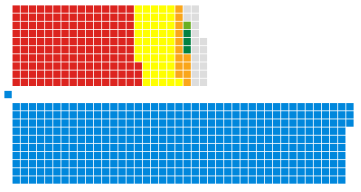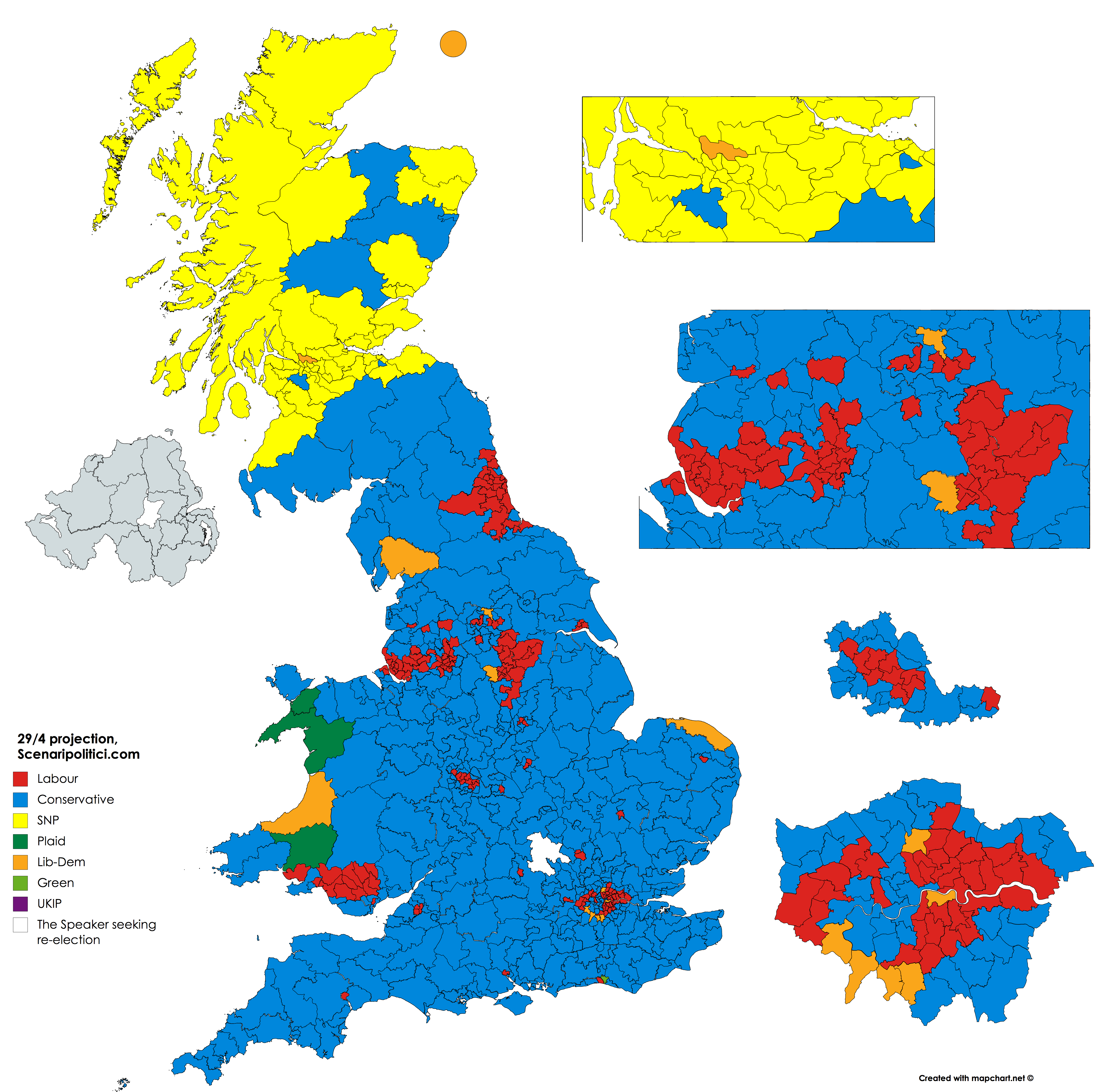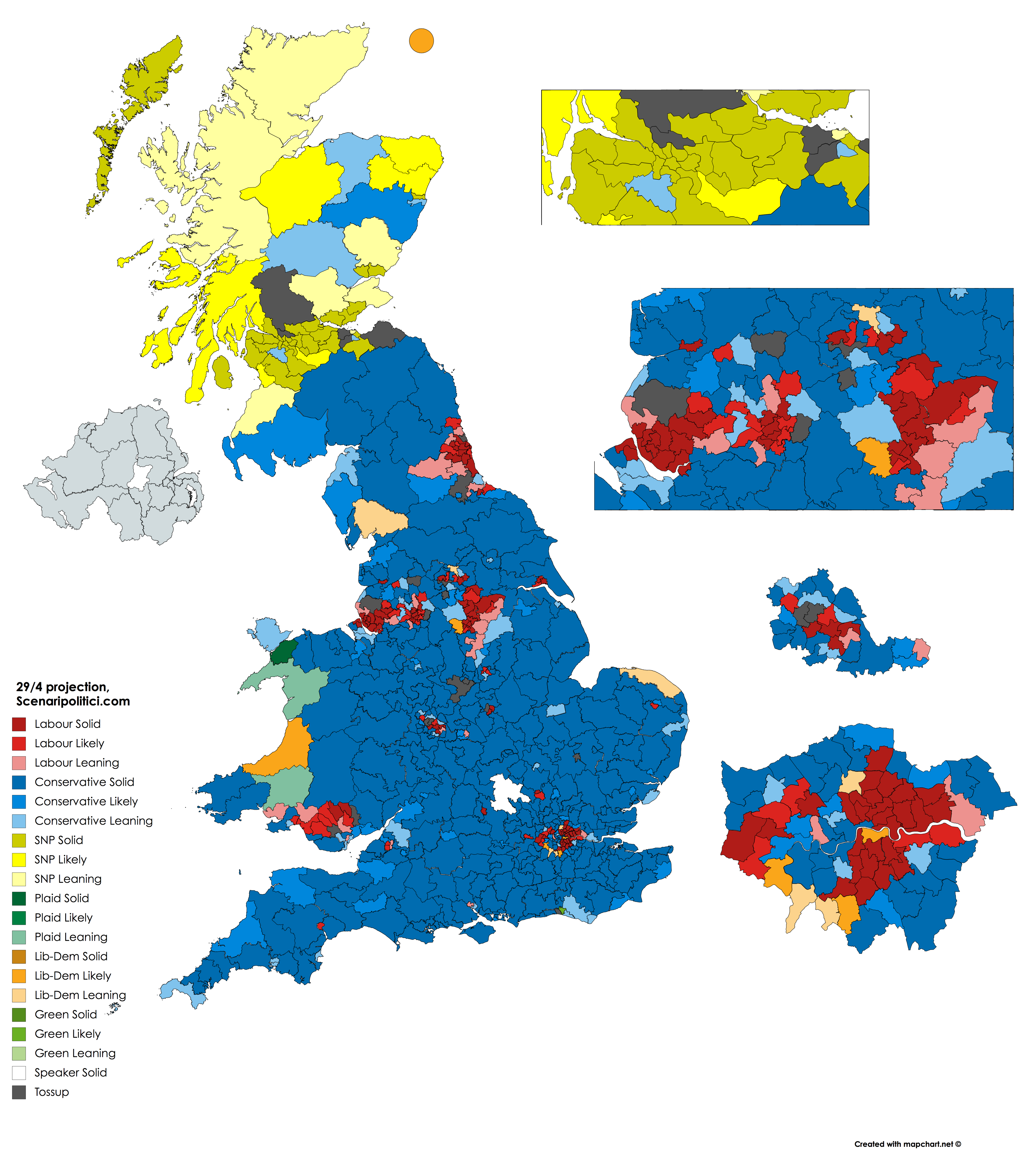This is our second projection for the United Kingdom general elections, which will take place on the 8th of June. It is based on a uniform projection across the individual constituencies of the regional swings from the 2015 elections. The swings are calculated by averaging those estimated by various polling organisations (ComRes, ICM, Ipsos Mori, Opinium, PanalBase, Survation and YouGov).
We consider six regions: Scotland, Wales, Northern England, Southern England, Greater London and the Midlands. Our estimate excludes Northern Ireland, which is not polled for the general elections.
Methodologically, we consider a seat safe for a party if we estimate a majority larger than 15%, likely if the majority is estimated between 8 and 15%, leaning if it is estimated between 2 and 8%. Finally, we consider seats with a projected majority smaller than 2% as tossups.
Our seats projection is as follows:
Conservative Party: 414 seats (314 solid, 43 likely, 50 leaning and 7 tossup)
Labour Party: 153 seats (80 solid, 42 likely, 24 leaning and 7 tossup)
SNP: 48 seats (31 solid, 6 likely, 7 leaning and 4 tossup)
Lib-dem: 13 seats (6 likely, 6 leaning and 1 tossup)
Plaid: 3 seats (1 solid and 2 leaning)
Green Party: 1 seat (likely)
UKIP: 0 seats

Let’s now analyse more in details the results of each party.
- The Conservative Party appears to be on track to achieve its best result, in term of seats, since the 1931 general elections. In particular, the Conservatives are projected to gain 77 seats from the Labour Party, 7 seats from the SNP, 1 seat from the Lib-Dem and 1 seat from UKIP. Looking at our regional averages, they should perform better than in 2015 in all six regions, although their improvement seems to be significantly smaller in London and in Southern England. London appears to be their weakest area, where we project they will lose 3 seats to the Lib-Dems, although they should also gain 9 seats from Labour. Furthermore, for a party that 16 years ago was holding no seats outside England, the putative results in the other home-nations are impressive: according to current polls, the Tories will become the biggest party in Wales and the second biggest in Scotland after the SNP.
- The Labour Party is in an opposite position: if these polls were confirmed in June, they would win the smallest number of seats since the 1931 general elections. We forecast they are not going to gain any new seat, as well as losing 77 seats to the Conservatives and 2 to the Lib-Dems. Furthermore, they are projected not to win any seat in Scotland for the first time since 1900 and to lose their historic position as the biggest party in Wales.
- The SNP is on track to win a large number of seats from an historic perspective, although their showing might be significantly worse than in 2015. They are projected to confirm 48 or their 56 seats, losing 7 seats to the Conservatives and 1 to the Lib-Dems.
- The Lib-Dems should significantly improve their terrible 2015 result, although the gains in term of seats might be limited. According to the opinion polls, their best performance will be in London, possibly because of their staunch pro-EU position. Of their 6 projected gains, 5 are in London (the other one is in Scotland): they should win 3 seats won by the Conservatives in 2015 and 2 won by Labour. Their gains in term of votes in the rest of the country should to be much smaller, and they are also projected to lose one seat in Northern England.
- Plaid Cymru and the Green Party should confirm their 2015 seats, but not gain any new seat.
- UKIP should lose many of its 2015 votes, as well as the only seat they won in 2015.
In summary, projecting the average of the opinion polls would lead to a landslide Conservative victory. If the abstentionist Irish Nationalist party Sinn Fein were to confirm its 4 seats, their working majority would be of 182 seats. Interestingly, even if the Conservatives were to win only the seats we currently project to be safe or likely, they would still achieve a sizable working majority of 68 seats.





